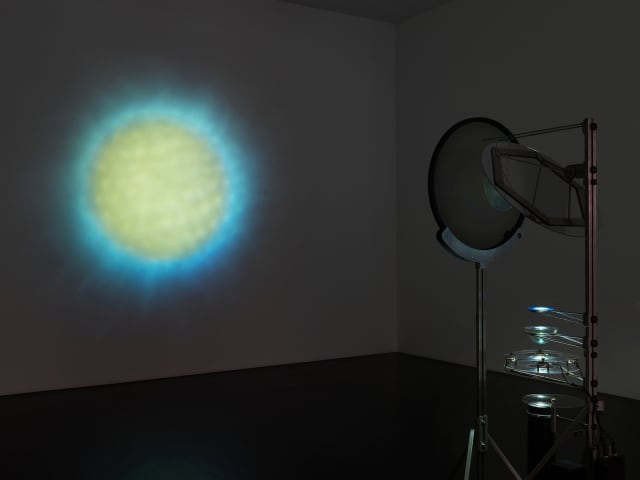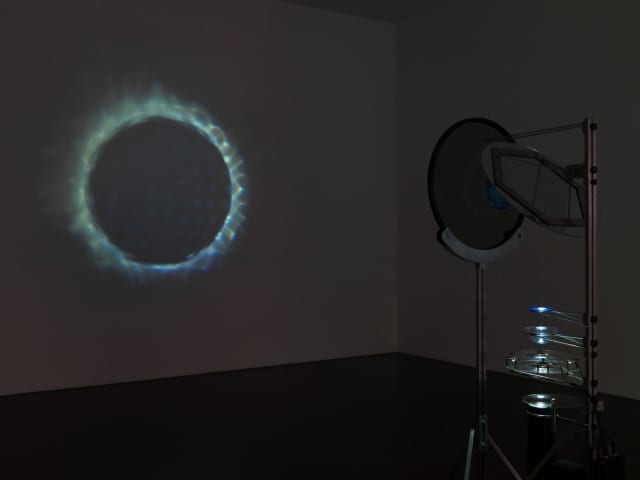The apparatus responsible for this projection work is immediately visible to visitors as they enter the room: a spotlight mounted to a stand shines upwards, through filters and a small basin of water, onto a mirror. The light is redirected onto a larger polarising disc, positioned a bit further away, and then onto the wall beyond.
Transducers, or simple loudspeakers, play deep tones that agitate the water in the basin. The fleeting patterns of light that dance across the projection react to the changing wavelengths of the soundwaves, forming Chladni lines, named after the physicist Ernst Chladni, who studied them in the nineteenth century. The lines appear only briefly, before the polarising filter rotates to block off the light as it aligns with the polariser mounted on the stand. The central circle grows black as the projection descends into penumbra and is surrounded by a shimmering aureole of light reminiscent of sun flares during an eclipse.
| Artwork details | |
Title |
Everything we know about knowing and a rough estimate of what we still don’t know that we don’t know |
Year |
2025 |
Materials |
Amplifier, transducer, embedded computer system, LED spotlight, polarisation filters, PET, glass mirror, glass lens, transparent oil, stainless steel, motors, control unit, iris diaphragm |

